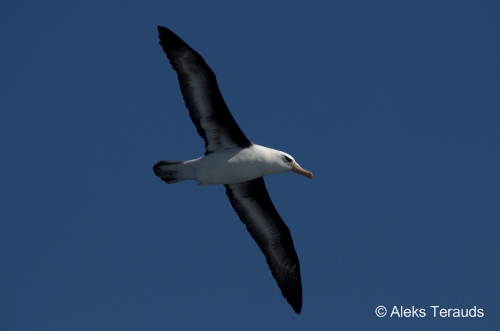Sonia Tidemann (Batchelor Institute of Indigenous Tertiary Education, Port Lincoln, Australia) and colleagues have published in the journal Australian Field Ornithology on observations of seabirds at the Antarctic Balleny Islands, including the Campbell Albatross Thalassarche impavida.
The paper’s abstract follows:
On 27-28 February 2014, at the Balleny Islands in Antarctica, penguins on two islands were observed by close approach via zodiac craft, and counts of all pelagic bird species were made from a passing ship. Most penguins on Sabrina Island and Chinstrap Islet were Adelie Penguins Pygoscelis adeliae. Percentage of Chinstrap Penguins P. antarcticus to Adelie Penguins was 7.3 on Sabrina Island and 10.7 on Chinstrap Islet. Four species - Campbell Albatross Thalassarche impavida, White-headed Petrel Pterodroma lessonii, Mottled Petrel P. inexpectata, and King Penguin Aptenodytes patagonicus - were recorded for the Balleny Islands for the first time.

Campbell Albatross, photograph by Aleks Terauds
Reference:
Tidemann, S.C., Walleyn, A. & Ryan, J.F. 2015. Observations of penguins and other pelagic bird species in the Balleny Islands, Antarctica. Australian Field Ornithology 32: 169-175.
John Cooper, ACAP Information Officer, 23 January 2015

 English
English  Français
Français  Español
Español